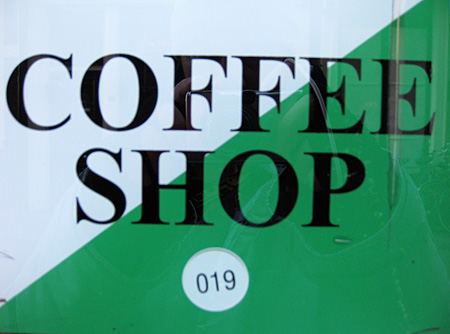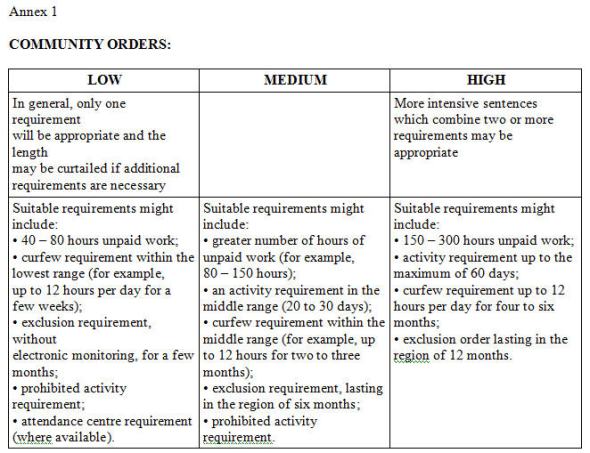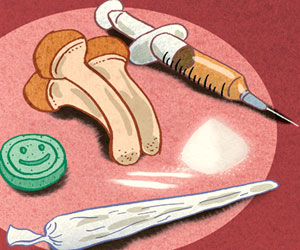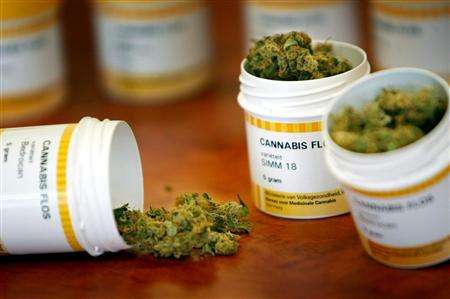Enough Worrying Already: Ver 2.0 (Update)
There is good news for all the cannabis connoisseurs who like to visit Amsterdam and enjoy the wide variety of product that is available from the Dutch capital’s many coffeeshops. The Dutch Tolerance Policy, that provides the legislation under which the Dutch coffeeshops can operate, was renewed on 1st July 2011 and will be valid until June 30th 2015.
This means that the feared ‘Weedpass’, a card only available to Dutch citizens that would factually ban foreigners from buying product at coffeeshops, can only be implemented through local legislation. Since City Councils like Amsterdam do not want the Weedpass scheme and local politicians such as the Mayor of Haarlem have said they do not want it either, this means it will not be possible to implement for at least 4 years during which visitors from abroad can still freely and openly buy product from Dutch coffeeshops”
The prospect of a “weed pass” ever being implemented into Amsterdam or any other central tourist districts of the Netherlands like Haarlem and Rotterdam for instance is a very unlikely one indeed. Not only do the mayors and officials in these districts have no interest in bringing into force laws that would be so harmful to the tourist industry, the proposed weed pass was never intended for implementation nationally, it was only ever intended for use in response to cross-border criminal buyers of large quantities of cannabis and large numbers of tourist buyers in the most southerly provinces of the Netherlands, Limburg, Zeeland and Brabant and most notably in the town of Maastricht.
Put forward by the Dutch Justice Minister, Ivo Opstelten, the ‘weed pass’ has only just been passed for implementation into southern regions of Holland starting May 1st and first reactions are showing that the majority of coffeeshop owners in the southern districts plan on a non-compliance response to the new laws in the hope that they will provoke an indictment that would give them a change to attest in court to the negative consequences of the implementation of this new policy.. What is more the Supreme Court equivalent in the Netherlands, the Council of State, has ruled that discrimination against tourists is outside of the law unless those tourists are responsible for more public disorder than residents.
The fate of the coffeeshops in the other nine Dutch provinces is currently uncertain but safe for the time being. Following the collapse of the Dutch cabinet earlier this week, the implementation of the “weed pass’ and subsequent ban of foreigners in the rest of the country, due January 1st 2013, will be preceded by early elections, now planned for September. With cannabis law reform-favoring parties such as the Green Party and the Social-Liberals leading the polls, it would seem that the Northern regions have already made their escape.
Peace
Keelan
Those flowers that we smoke….they’re good for us
Just watch and enjoy this artistic take on anti-prohibition videos.
Peace
Keelan
Drug policy in the U.K. still needs to be demolished and rebuilt from scratch but this is a HUGE leap forward. Enjoy.
CAUTION. The possession, cultivation, production, supply and importation of cannabis remain illegal. The Smoke Chamber neither condones nor encourages the breaking of any law. This article is CLEAR’s interpretation of the Sentencing Council drug offences guidelines as they relate to cannabis. Do not rely solely on this interpretation. You should take professional legal advice if you have any concerns.
We’ve been away for a few months but we’re back and we’ve got some great news to share. This article was posted on CLEAR’s website back in January and as the article title says ,
Effectively, Growing Your Own Has Been Decriminalised. We Are FREE!
So here you go, read on and enjoy the fantastic news. But please be careful.
A CLEAR Interpretation Of The Sentencing Council Drug Offences Guidelines Concerning Cannabis
1. Section 125(1) (a) of the Coroners and Justice Act 2009 provides that:
“Every court – (a) must, in sentencing an offender, follow any sentencing guideline which is relevant to the offender’s case, and (b) must, in exercising any other function relating to the sentencing of offenders, follow any sentencing guidelines which are relevant to the exercise of the function, unless the court is satisfied that it would be contrary to the interests of justice to do so.”
The guideline will apply to all offenders aged 18 and older, who are sentenced on or after 27 February 2012, regardless of the date of the offence.
It seems therefore that while these are “only” guidelines, the courts are obliged to follow them or, presumably, sentences outside these guidelines would be subject to appeal on those grounds alone.
2. So the government, yet again, tinkers around the edges of a badly implemented interpretation of a mechanism designed to reduce harms from drugs. The whole of the current drugs policy is in a total mess and needs restructuring from the bottom up. As Professor Nutt recently told Sky News: “The drug laws are not based on any kind of sense or evidence so any sentencing for drugs is questionable. What we should be doing is properly revising the drug laws so that the sentencing is proportionate to the harm of drugs”
However, we are where we are and, all things considered, these new guidelines appear to be a major step in the right direction generally for small scale home growers and specifically for small scale home grow medicinal users.
3. A key statement appears in the Response to Consultation document, question seven – ”Should “medical evidence that a drug is used to help with a medical condition” be included as a mitigating factor for possession offences?”
There was resistance to this suggestion from CPS and ACPO but the conclusion was stated as follows:
“…..numerous other consultees, including the International Drug Policy Consortium (IDPC), the Magistrates Association and Drugscope, referred to evidence of the medical benefits that the active ingredients of cannabis have in the treatment of conditions associated with Multiple Sclerosis and some forms of cancer. It was suggested that if the offender can bring to court evidence that they have been attempting to obtain the drug by legal means and written evidence from their medical practitioner that the use of the drug can alleviate the symptoms of their illness, then this should be a convincing mitigating factor. Some respondents, including the Advisory Council on the Misuse of Drugs (ACMD) and the Council of Circuit Judges, were keen that the mitigation should also include cases where the offender believes that cannabis is helping with his or her medical condition but in reality it is having no or only a placebo effect. The Council agrees that where cannabis is used to help with a diagnosed medical condition this should serve as a mitigating factor. The following wording will be included at Step 2 in the definitive guideline: “Offender is using cannabis to help with a diagnosed medical condition”.”
However, the specific phrase ”Offender is using cannabis to help with a diagnosed medical condition” only appears at step two in the possession section of the guidelines document under “Factors reducing seriousness or reflecting personal mitigation”. For all other sections this is the only reference to medical usage which is contrary to the implication of the statement in the Response to Consultation document. The apparent inconsistency and contradictory nature of these statements is a little worrying.
But assuming that possession and cultivation go hand in hand maybe the anomaly above can be ignored. So for medicinal users this mitigation requires a little bit of forward thinking by those affected.
4. Firstly, to prove you have been attempting to “obtain the drug by legal means”, approach your GP and ask for a Sativex prescription for your “diagnosed” medical condition. It will probably be refused either on applicability or cost grounds. If you can, persuade your GP to record that you use cannabis and find it highly effective and safe and there are no apparent adverse effects. Even if your GP does not agree that it is having a beneficial effect, the guidelines recognise the “placebo effect” – if you believe it is working for you, that is enough. However, if your GP ticks the ‘cannabis user’ box on the patient database it will automatically flag you up as a drug abuser so ask your GP to note that there is no “abuse” in your case.
Secondly, enquire about a private prescription and get costs – these of course are prohibitive and beyond the financial means of the majority, compared with street prices.
Thirdly, write to the Home Office and explain that, to avoid breaking the law, you would like an import licence for Bedrocan. Again this will be refused by letter.
From the wording it appears that there may be a degree of wriggle room even without the above evidence but they do choose their words carefully and the word “diagnosed” is key, so make sure your diagnosis is recorded by your GP.
5. The guidelines for Production/Cultivation are:
Lesser role ‘if own operation, solely for own use (considering reasonableness of account in all the circumstances).’
Category 3 : 28 plants (domestic operation with assumed yield of 40g per plant): Sentence range – Low level community order (see Annex 1) > 26 weeks’ custody
Category 4 : 9 plants (domestic operation with assumed yield of 40g per plant): Sentence range – Discharge > medium level community order (see Annex 1)
6. There are also guidelines for importation and supply which set a limit of 100 grams: Sentence range – Band B fine (see Annex 2) > medium level community order (see Annex 1).
This could relate to importing Bedrocan from Holland or a group of friends “clubbing together” in much the same way as the cannabis clubs operate in Spain.
7. The guideline for possession will no longer take any account of quantity: Sentence range – Discharge > 26 weeks custody
The important point about these sentencing guidelines is that penalties have been reduced to such a level that I doubt whether the CPS will be interested in pursuing such cases, particularly not against medicinal users. Therefore, the police won’t be interested. These remain offences but with a little common sense and discretion we can now be free of the fear of persecution for growing and using cannabis.
A sweet state of euphoria
So, I’m currently spending three weeks with my girlfriend in the United States and at the beginning of my stay I was sorted out with a half ounce of Raspberry Kush grown in Vermont. Before this trip I had only previously read about the strain in passing and had no major interest in trying any sort of sweet tasting, “fruit based”, cross-bred strains as I am normally more interested in heavy, skunky tasting, indica dominant strains but there was a nice surprise in store with this find.
Raspberry Kush is an indica dominant hybrid strain which borrows it’s genetics from Raspberry Cough (the American cousin of the European favourite, “Strawberry Cough”) and Cheese Kush. The buds are a dark green with hints of purple/pink at the leaf tips (if any) and literally frosted in trichomes and crystals, they are dense and tightly formed nugs and there are orange to brown hairs interlaced throughout. The buds exhibit a sweet yet spicy smell which only adds to the intricacy and complexity of this amazing specimen. It’s indica dominance is obvious from the first few hits of a joint as it tickles the back of your throat and lungs momentarily but after this discomfort (or pleasure for the true connoisseur) it will open up your lungs and mind into a stoney Eden. There is an initial heaviness around the back of the eyes and the pressure only seems to build as the sativa genetics break through and bring forth an uplifting body high and overwhelming sense of euphoria but don’t be fooled as this strain never seems to get you uncomfortably chonged, only relaxed and the effects last no more than 2-3 hours. The only negative I’ve experienced while smoking this strain is that dry mouth seems to be worse than normal but this can be kept at bay by keeping a glass of your favourite beverage at hand.
From a medicinal outlook this is a great strain for relaxing the mind and body and removing feelings of anxiety, stress or depression. THC levels are in the high end of the spectrum for an indica strain with the count usually being >15%. Surprisingly though, with how indica dominant this strain is, I would only give it a 4 out of 10 for relieving pain and nausea as the majority of the high seems to be centered around feeling uplifted and care-free as the CBD count is fairly low with this one.
Overall the Raspberry Kush experience is a couch locked, relaxed and lazy experience. It is a great smoke for an after-work kick back, a night cap that will put you soundly to bed or even an uplifting morning toke due to the uplifting sense of euphoria. Also, bring out your best munchies…because bland food will taste good and good food will taste great! Definitely one of the most potent and much more complex strains I have smoked.
Peace
Keelan
Cannabis is safe and non-addictive
This article is an extract from the CLEAR party’s website.
Peace
Keelan
At a conference at GW Pharmaceutical’s headquarters in Porton Down, Wiltshire, Professor H.P. Hartung, Chair of Neurology at Heinrich-Heine University, Dusseldorf, Germany announced that Sativex, the super strong, concentrated cannabis medicine has “…limited relevant adverse effects and – particularly reassuring – the drug does not appear to lead to withdrawal effects if patients suddenly stop using it.” Full details here.
The Truth About Sativex Is Clear
Sativex is made from high-THC skunk cannabis blended with a high-CBD variety and concentrated into a super strength solution that can be used to treat MS , chronic pain and, scientists believe , many more previously unrelieved conditions.
Super strong, concentrated cannabis is safe. It’s not addictive. It doesn’t cause psychosis. There are virtually no side effects.
What a breakthrough!
Illegal drugs do not exist
We have the right to put any substance we would like to into our bodies and the uncritical, unthinking discourse of society and government alike hampers the amelioration of the seemingly intractable problems of current drug policy, law and praxis, both international and domestic. Nowhere is this more obvious than in the use of the mythological phrases “legal drugs” and “illegal drugs”. No instrument of law makes a drug or substance unlawful; rather, drug laws make some human actions regarding some drugs unlawful.
Drug laws regulate people, not drugs!
Careful attention to the language used where drugs are concerned is important because it is our liberties and rights that are being regulated and taken away; so when we refer to drugs as “illegal” or “legal” we conceal the effect drugs laws have on the individual and the community under a seemingly harmless phrase which has no bearing on reality.
The Commentary on the 1971 UN Convention on Psychotropic Substances made it clear three decades ago that, with respect to penal provisions, drug laws regulate human action:
Article 22 [of the 1971 Convention] uses “a general formula for defining actions to be subject to penal law”, while article 36 [of the 1961 Single Convention] employs “for that purpose in the first instance the enumerative method and only in a supplementary way a general formula.” (United Nations, 1976, page 346)
What “actions” does Article 36 of the 1961 Single Convention speak of? Article 36(1)(a) says:
“Subject to its constitutional limitations, each Party shall adopt such measures as will ensure that cultivation, production, manufacture, extraction, preparation, possession, offering, offering for sale, distribution, purchase, sale, delivery on any terms whatsoever, brokerage, dispatch, dispatch in transit, transport, importation and exportation of drugs contrary to the provisions of this Convention, and any other action which in the opinion of such Party may be contrary to the provisions of this Convention, shall be punishable offences when committed intentionally, and that serious offences shall be liable to adequate punishment particularly by imprisonment or other penalties of deprivation of liberty”. (United Nations, 1961)
The “punishable offences” described above are property activities with respect to drugs. In effect, drug laws control property rights. Thus, drugs legislation regulates humans and not drugs. This makes sense; drugs will not obey; drugs have no agency or consciousness.
Hence the UK Misuse of Drugs Act 1971 regulates persons who import or export, produce or manufacture, supply or distribute, and possess certain “dangerous or otherwise harmful drugs”.
As neither the phrase “illegal drug” nor “legal drug” appears in the Act: we should stop using these phrases immediately. What people often refer to as “illegal” drugs are actually, in law, “controlled drugs”; alas, “controlled drugs” is yet another misnomer as they are far from controlled.
However, all this begs the most important question: why are some “dangerous or otherwise harmful drugs” designated as controlled by law and other equally (or more) “dangerous or otherwise harmful drugs” are not? On what rational and objective basis are such distinctions made?
The UK Government’s response to the House of Commons Science and Technology Committee’s 2006 report “Drug classification: making a hash of it?”, said:
“The distinction between legal and illegal substances is not unequivocally based on pharmacology, economic or risk benefit analysis. It is also based in large part on historical and cultural precedents”.
If we exorcise the mythological phrase, “legal and illegal”, from this sentence, it reads:
“The distinction between … substances is not unequivocally based on pharmacology, economic or risk benefit analysis. It is also based in large part on historical and cultural precedents”.
So when we discuss and analyse the “drugs problem”, let us remember that alcohol and tobacco are drugs. And let us also remember that the (un)intended consequences of a “War on some people who use some Drugs” is exactly that: partial, unequal, and unjust.
Peace
Keelan
Cannabis Greatly Decreases The Risk Of Seizures
This research was published back in January of this year and is just another step forward in proving the “miracle drug” status of cannabis in the medicinal world.
The administration of the cannabinoid CBD (cannabidiol) significantly reduces the incidences and severity of seizures, according to preclinical data published online in “Seizure: The Journal of the British Epilepsy Association”.
Investigators at the University of Reading, School of Pharmacy, have assessed the anticonvulsant activity of CBD (administered in 1, 10, and 100mg/kg doses) in two established rodent seizure models, the acute pilocarpine model of temporal lobe seizure and the penicillin model of partial seizure. Seizure activity was video recorded and scored offline using model-specific seizure severity scales.
Authors have reported: “CBD (all doses) significantly reduced the percentage of animals experiencing the most severe pilocarpine-induced seizures. In the penicillin model, CBD (all doses) significantly increased the percentage of seizure-free animals; CBD (100mg/kg) decreased the percentage of animals experiencing the most severe seizures, decreased median seizure severity and showed a strong trend to reduce mortality.”
They concluded, “These results extend the anti-convulsant profile of CBD; when combined with a reported absence of psychoactive effects, this evidence strongly supports CBD as a therapeutic candidate for a diverse range of human epilepsies.”
Survey data published in 2004 in the journal “Neurology” reported that 21 percent of subjects with epilepsy had used marijuana in the past year, “with the majority of active users reporting beneficial effects on seizures.”
The full reports for these findings on the study of CBD used in the treatment of Epilepsy can be found in “Seizure: The Journal of the British Epilepsy Association”
Peace,
Keelan
Take an afternoon off for this one.
Don’t let the length of this video put you off. This 4 hour and 20 minute long documentary on cannabis, has to be one of the most in depth and educational videos available. So grab some munchies, a big bag of weed and make some free time (or quite a lot of it) and sit down and prepare to learn a lot. This video covers the history of cannabis in the medicine cabinet, the history of cannabis prohibition including an in depth look into the crimes caused and problems caused by prohibition and all of the modern day research into it’s medicinal properties
Peace
Keelan







